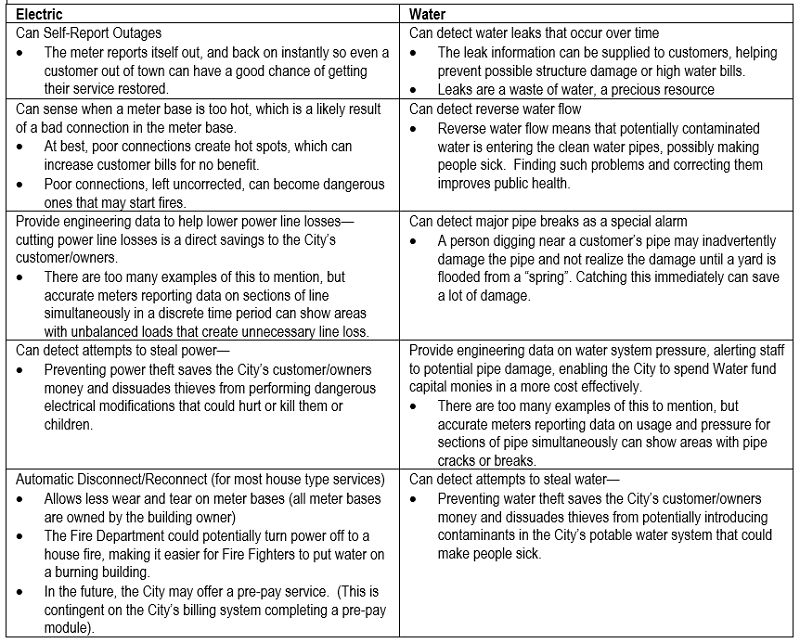
Special to Iredell Free News
The Statesville City Council on Monday plans to discuss implementing a $6.7 million Automated Meter Infrastructure (AMI) System for city electricity and water customers.
The AMI system would allow electric and water meters to be read remotely. After many years of discussion and study, including a recent year-long pilot program, city staff will present a request to Council to implement the AMI system throughout the city.
Because of the impact the AMI system is expected to have on city utilities customers, and in preparation for the citizen response to such an important project, staff has prepared an overview of the program with some frequently asked questions.
The Council meeting can be viewed live on Spectrum cable channel 20 or online at www.statesvillenc.net/live. Staff will continue to update the citizens as the project moves forward.
FREQUENTLY ASKED QUESTIONS ABOUT AMI
♦ What is AMI? AMI stands for Automated Metering Infrastructure. Some people call it Smart Metering or Smart Grid, but in plain language, it is electric and water meters that provide their readings remotely to the City in an automatic, daily fashion. These meters usually have secondary functions that will help the City deliver better customer service.
♦ How Does the AMI Meter Work? With AMI meters, Statesville will be able to read, receive alerts, disconnect, and reconnect power remotely. The AMI meters “talk” electronically to a base station for a few seconds each day. During storms or situations where the meter is experiencing trouble, the meters will alert the base station. This means that in the future, meters can report an outage before the customer can dial the digits for the outage line on their phone. The city will be able to get an automatic map/picture of outages so that crews can be directed to find the outage faster in most cases.
The meters have many special features, including

♦ What are the benefits of Customer Portal? This tool will empower customers to have the best data available to understand how their usage patterns affect their bill: The customer will be able to:
• Access and review electric and/or water meter usage on an hourly, daily, weekly or monthly basis; and
• Compare usage to weather data. Receive notification of alerts about usage levels (if requested).
♦ What is the cost and cost savings to converting to AMI? Staff expects the city’s cost for AMI to be just under $6.7 million. From a financial perspective, staff expects savings in excess of $900,000 annually from this system, most of which will come from reduced electric and water system losses and significantly reduced meter-reading costs. Adjusting for inflation and expected growth of the city, staff expects AMI to have an eight-year payback, which represents an approximate 10% rate of return. In 2020, a 10% rate of return on a project that also brings significant non-financial or hard-to-quantify benefits is excellent, according to staff.
Because of low-cost financing available to the city at this time (completely self-financed between the Electric, Water, and Sewer Funds), AMI implementation can be done without raising utility rates to pay for the project.
♦ What is the timeframe for installing the AMI system? If Council approves full implementation of AMI, staff expects implementation to be done in about 12 months. Most customers should experience one brief outage for their electric meter swap (about 15 minutes) and for their water meter swap (about 30 minutes). The city will notify customers before their meter is upgraded.
The city plans to use contractors to make the meter changes who will provide proper identification and paperwork when requested.




Great idea, but will city employees lose their jobs?